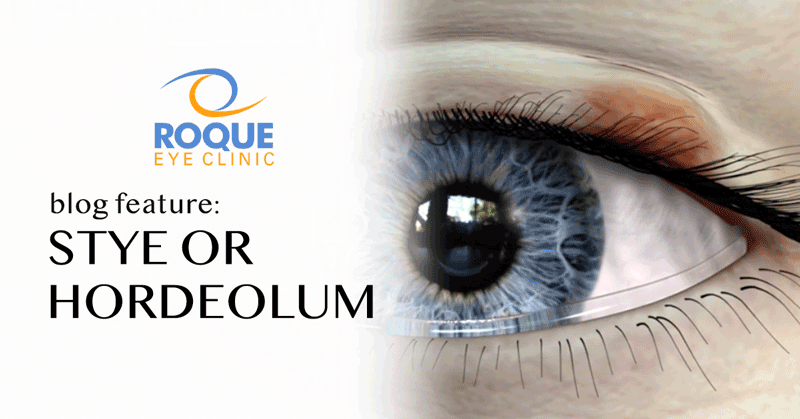STYE FAQ
FAQ
A stye or hordeolum looks like a pimple next to an eyelash. It begins when an oil gland in the eyelid located at the base of the eyelash is infected. A stye may develop a white or yellow head of pus. It can grow on the inside or outside of the lid. The first signs are pain, redness, swelling, and tenderness. It can be puffy or swollen. Usually, the stye will burst and pus will come out on its own. They do not leave lumps in the eyelid once they drain.
A stye is often confused with another form of cyst of the eyelid called a chalazion. Chalazions occur within the eyelid and not on the edge where the bases of the eyelashes are. They often are red, sore and then form firm lumps in the eyelid.
Styes are primarily caused by germs (bacteria). Staphylococcal bacteria from the nose is the most common cause. Avoid rubbing your nose and your eyes to minimize transfer. It may also be secondary to chronic eyelid inflammation.
Tenderness, redness and swelling along the edge of the eyelid at the base of the eyelashes. Sometimes, there is a white or yellow head of pus. It may or may not drain. Your vision will not be affected unless the upper eyelid becomes severely infected with preseptal cellulitis and droops over your field of vision.
An ophthalmologist will be able to distinguish between a stye and a chalazion and treat the condition appropriately.
Styes are typically treated with warm packs (compresses) until drainage occurs. You can encourage the process of healing by applying hot compresses for 10 to 15 minutes, three or four times a day, over the course of several days. In rare cases, medicines that kill germs (antibiotics) may be prescribed. These antibiotics may be in the form of drops, cream or pills. If a hard lump has formed, it is generally necessary to do a small incision and remove the hardened contents of the cyst in a minor surgical procedure done in the office. In suspicious cases, your caregiver may send the contents of the cyst to the lab to be certain that it is not a rare, but dangerous form of cancer of the glands of the eyelid.
Wash your hands often and dry them with a clean towel. Avoid touching your eyelid. This may spread the infection to other parts of the eye. Apply heat to your eyelid for 10 to 20 minutes, several times a day, to ease pain and help to heal it faster. Do not squeeze the stye. Allow it to drain on its own. Wash your eyelid carefully 3 to 4 times per day to remove any pus. Do not share towels, pillowcases, bedsheets, blankets to avoid potential transfer to other members of the family.
Seek immediate medical care if:
- If your eye becomes painful or puffy (swollen).
- Your vision changes.
- Your stye does not drain by itself within 3 days.
- Your stye comes back within a short period of time, even with treatment.
- You have redness (inflammation) around the eye.
- You have a fever.
ExitCare Patient Information 2014 LLC
Ferri's Netter Patient Advisor 2012. Saunders
BOOK AN APPOINTMENT
It takes less than 5 minutes to complete your online booking. Alternatively, you may call our BGC Clinic, or our Alabang Clinic for assistance.







